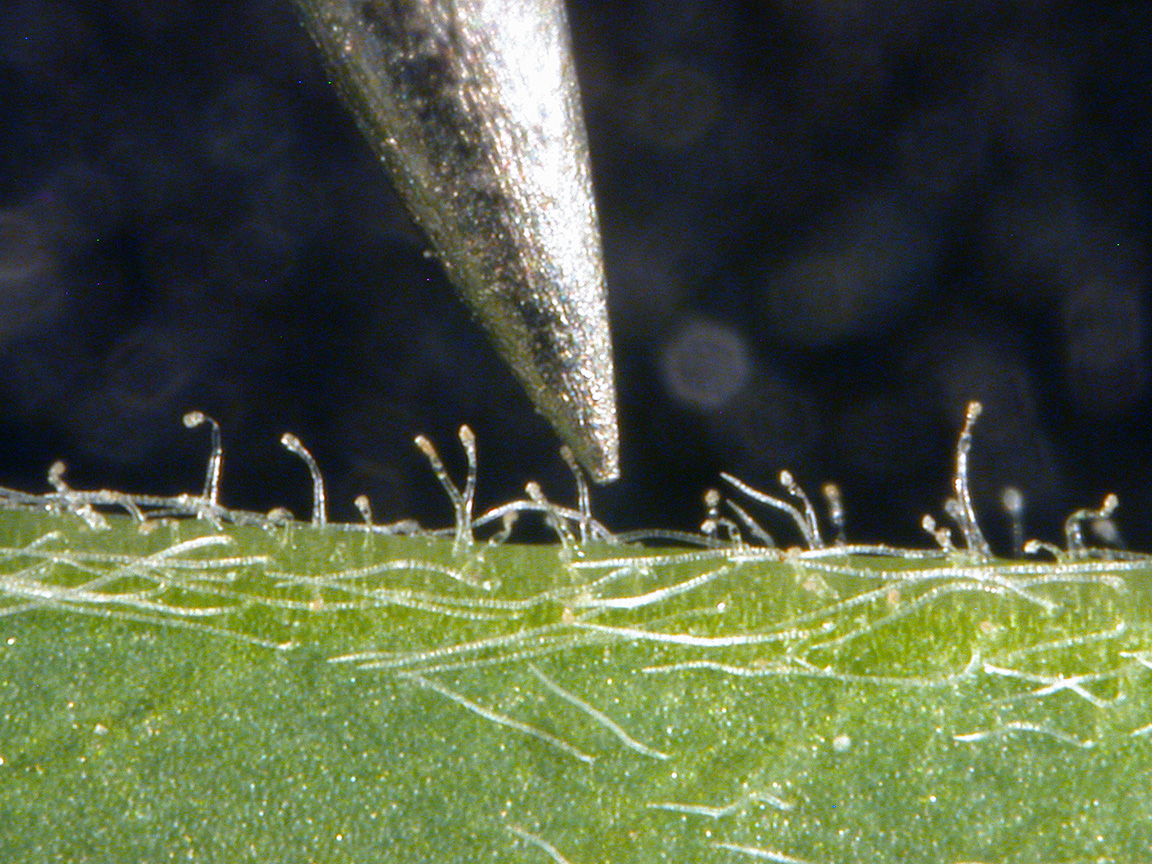In most years, with highly resistant potato leafhopper alfalfa varieties, management of this pest with insecticides usually isn’t needed. This year is an exception, as leafhopper numbers are very high, see last week’s article.
Resistance (really tolerance), comes from physical characteristics, i.e., glandular hairs, bred into commercially available varieties. These glandular hairs ooze tiny droplets of a sticky material that trap and/or impede the adult and immature leafhopper movement. These tiny droplets may also affect them by reducing their rate of feeding and egg production. In years with low to moderate potato leafhopper numbers, the highly resistant varieties (70% or greater glandular hair expression) stay green. Meaning, leafhopper numbers stay below treatment thresholds and hopper-burn/yield loss is negligible.
However, scouting for potato leafhopper is still necessary with resistant/tolerant varieties. To assess leafhopper populations and the potential for damage, take at least 5 sets of 20 sweeps with a 15″ diameter sweep net in representative areas of a field. Carefully examine the contents of the sweep net, count the number of adults and nymphs, and calculate the number of leafhoppers per sweep. Research at Iowa State University has shown that treatment thresholds for tolerant cultivars are nearly 10 times the number of potato leafhopper to traditional alfalfa, see below.
| Management Thresholds for Potato Leafhopper | ||
|---|---|---|
| Agerage Number of Leafhoppers (Adults/Nymphs) Per Sweep | ||
| Stem Height (Inches) | Traditional Alfalfa | Tolerant Alfalfa |
| Under 3 | 0.2 | 2.0 |
| 4-6 | 0.5 | 5.0 |
| 7-12 | 1.0 | 8.0 |
| Greater than 12 | 1.5 | 15.0 |

Plots of a potato leafhopper susceptible (left) versus tolerant (right) showing differences in hopper-burn. Taken June 24, 2020.



